5 Famous Artists Who Were Migrants and Other Stories
As long as there have been artists, there have been migrant artists. Like anyone else, they’ve left their homeland and traveled abroad for many...
Catriona Miller 18 December 2024
2 December 2024 min Read
Pierre-Auguste Renoir, a leading member of Impressionism, was perhaps the most vibrant painter of color and light in the famous French movement. While Renoir’s work emphasized beauty with loose brushstrokes, his life was just as vivid as his art. This is the impressive story of Renoir’s life.
Pierre-Auguste Renoir was born in Limoges, Haute-Vienne, France in 1841. His family moved to Paris in 1844 so that his father, a tailor, could have better opportunities. Renoir’s first interest while growing up in Paris was music. As a young child, he would leave school and music lessons behind to help support his family while working in a porcelain factory. Living near the Louvre in central Paris, he would frequent the world-famous art museum as much as possible.
Abandoning ceramics, he enrolled in École des Beaux-Arts to practice his art before studying under Charles Gleyre in Paris, through whom he met Claude Monet and Alfred Sisley. He exhibited his paintings at the Paris Salon throughout the 1860s while struggling financially and was eventually recognized in 1868.
His efforts for further success were thwarted during the Paris Commune in 1871 when he was accused of being a spy. He was about to be executed when Raoul Rigault, a socialist revolutionary, recognized Renoir and let him go.
However, it was not Renoir, the artist, who was familiar to Rigault. Renoir had helped to hide Rigault during his younger days as a revolutionary and fugitive on the run. Therefore, Raoul Rigault returned the favor to Renoir. Fortunately, the artist’s life did not end too soon. Can you imagine all the Renoir masterpieces we would have missed out on?
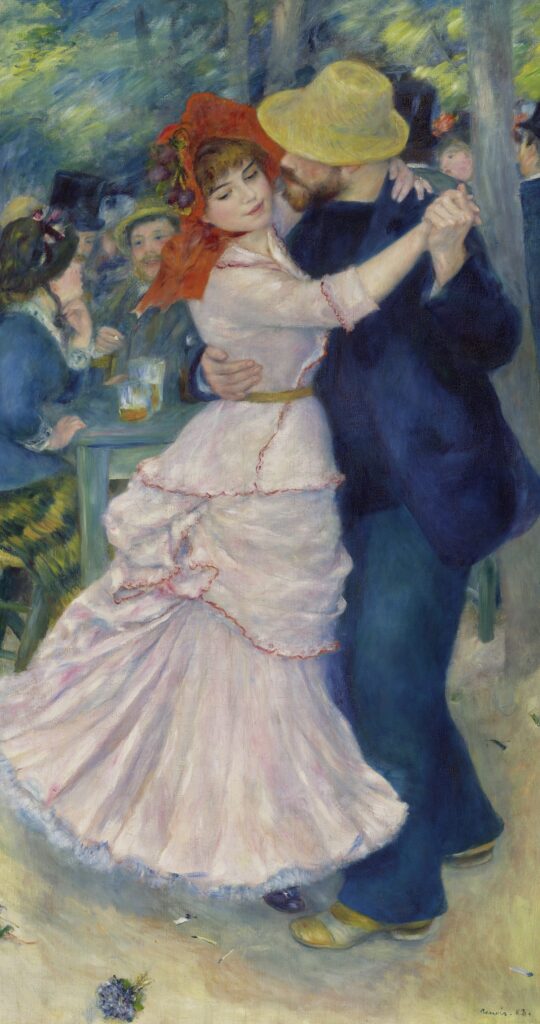
Pierre-Auguste Renoir, Dance at Bougival, 1883, Museum of Fine Arts, Boston, MA, USA.
Like Dance at Bougival, for instance. Painted in 1883, Dance at Bougival can be found at the Museum of Fine Arts in Boston, Massachusetts. A delightful and detailed rendition of movement and color contrast, Renoir makes the woman’s face, French painter Suzanne Valadon, the focus of the composition. The man’s eyes are hidden, but his look still shows a sense of sensual yearning or admiration while dancing with her. Bougival, a suburb of Paris on the river Seine, was a gathering spot for both regular Parisians and the Impressionists, perfectly captured here by Renoir.
In 1874, Pierre-Auguste Renoir’s life began to change significantly. Along with Sisley, Monet, Camille Pissarro, Edgar Degas, and Paul Cézanne, Renoir would hold the first Impressionist exhibit. While the exhibit was not necessarily well-received, Renoir would go on to make a living from portrait commissions and became a well-known, successful painter.
Pierre-Auguste Renoir’s work continued to grow. One of his favorite spots to paint was on the river Seine in Paris. The two paintings below – Two Sisters (On the Terrace) and Luncheon at the Boating Party – each take place near the bank of the Seine. The latter painting is a masterwork of a group scene and a depiction of stillness and movement. The table is almost a still-life painting on its own, while its surroundings are filled with life itself. Fluid brushstrokes add rich detail, capturing the daylight that enhances the jubilant occasion.
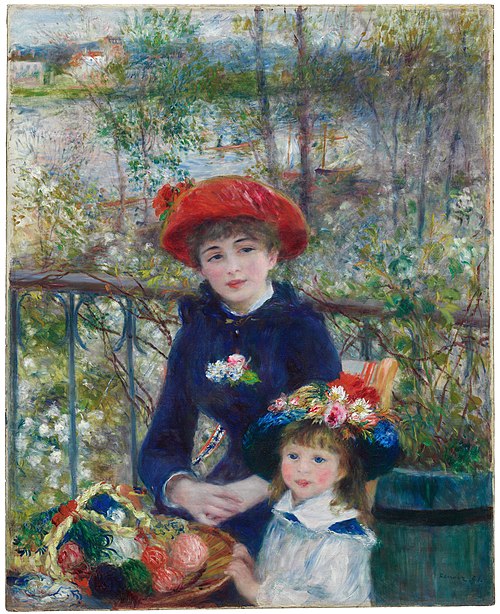
Pierre-Auguste Renoir, Two Sisters (On the Terrace), 1881, Art Institute of Chicago, Chicago, IL, USA.
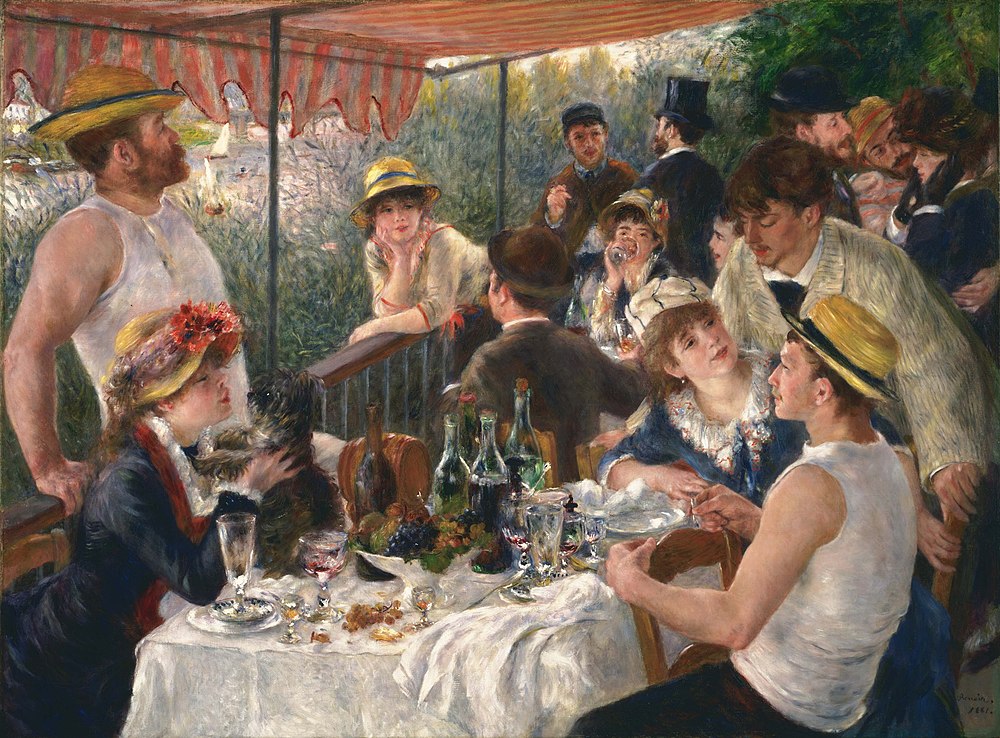
Pierre-Auguste Renoir, Luncheon at the Boating Party, 1880-1881, The Phillips Collection, Washington, DC, USA.
In the 1880s, Renoir became disillusioned with Impressionism and began to break away from the movement. In 1881, he traveled to Algeria, Italy, and Spain and studied classicism. He started approaching his canvases with smoother brushstrokes and a greater sense of form and line in depicting his subjects, especially his nude paintings portraying bathing women.
This sudden change in his works starting in 1883 is known as his “Ingres Period” for their similarities to the works of French Neoclassical painter Jean-Auguste-Dominique Ingres (1780-1867). An example of this type of work from later in Renoir’s life is below.
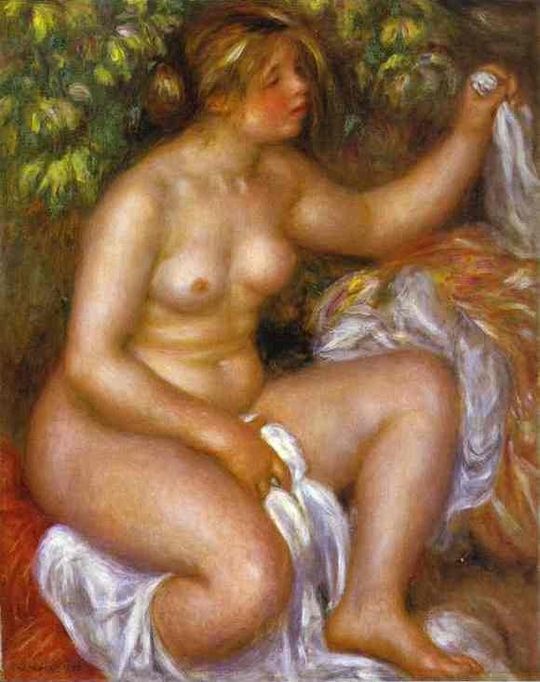
Pierre-Auguste Renoir, After the Bath, 1910, The Barnes Foundation, Philadelphia, PA, USA.
In 1890, Pierre-Auguste Renoir married one of his subjects in Luncheon at the Boating Party, Aline Victorine Charigot. He would paint more works, including those featuring his wife and their children after being diagnosed with arthritis in 1892. They had three children, each becoming artists in different mediums.
None is perhaps more famous than Jean Renoir (1894-1979), who became a master of his chosen art form: cinema. Jean directed some of the greatest films ever made, including La Grande Illusion (1937) and La Règle du jeu (The Rules of the Game, 1939). He is the young subject of his father’s painting below.
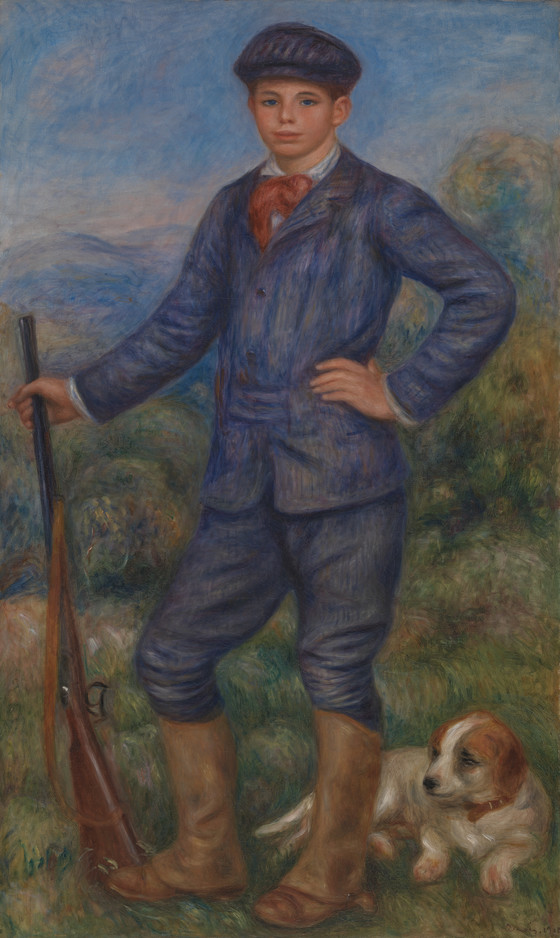
Pierre-Auguste Renoir, Jean as a Huntsman, 1910, Los Angeles County Museum of Art, Los Angeles, CA, USA.
Renoir managed to fight through the pain of arthritis, saying, “The pain passes, but the beauty remains.” He even made sculptures during his last few years. In 1919, with some of his works hanging in the Louvre, he died of a heart attack. With works now displayed in art museums worldwide, Pierre-Auguste Renoir is remembered as one of the seminal Impressionists and greatest painters who ever lived.
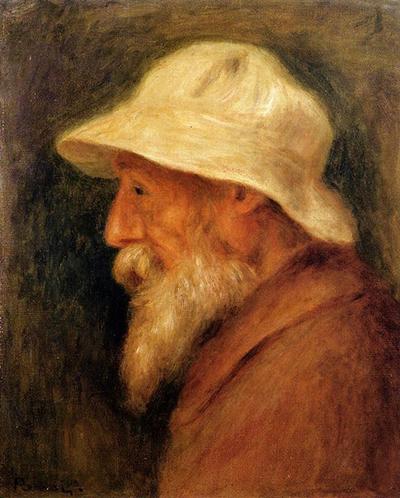
Pierre-Auguste Renoir, Self-Portrait with a White Hat, 1910, private collection.
DailyArt Magazine needs your support. Every contribution, however big or small, is very valuable for our future. Thanks to it, we will be able to sustain and grow the Magazine. Thank you for your help!